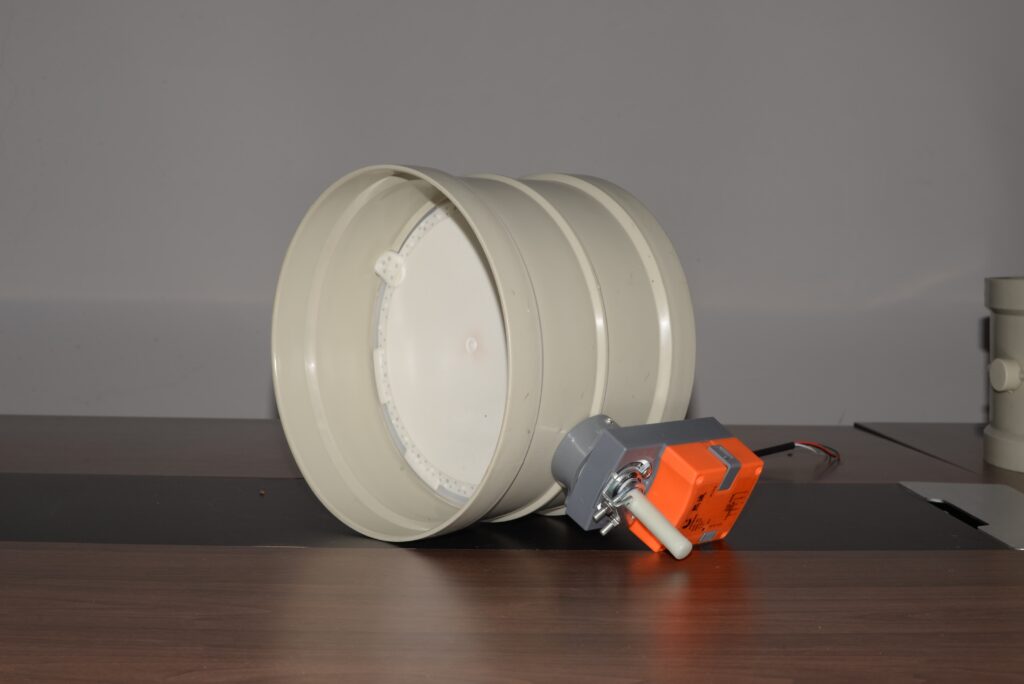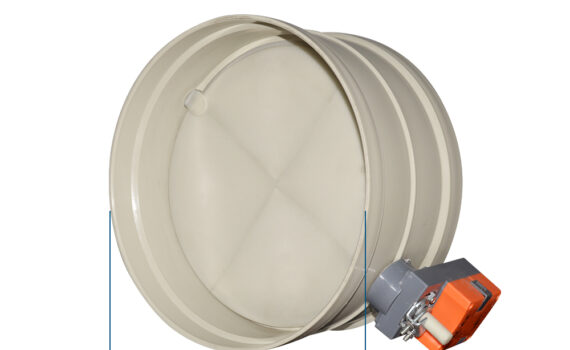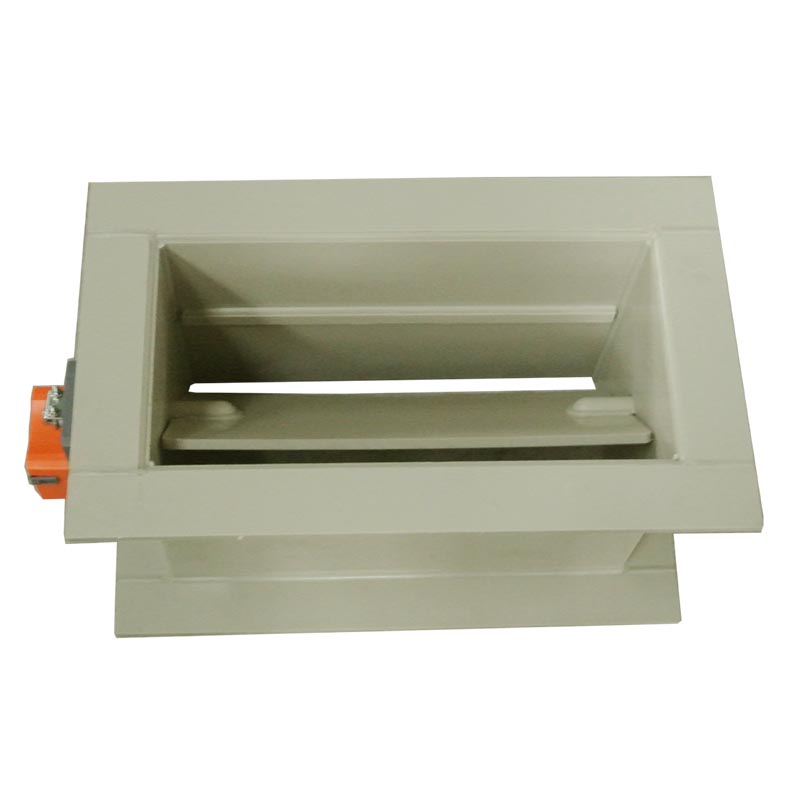Polypropylene electric damper working principle
Category : Blog
Polypropylene Electric Damper is a mechanical device designed to regulate or control the flow of air in HVAC (Heating, Ventilation and Air Conditioning) systems. These dampers are primarily used to regulate air volume, pressure and temperature in ductwork. Polypropylene electric dampers are known for their durability, high performance and low maintenance requirements. In this article, we will discuss in detail how polypropylene electric dampers work.

Polypropylene electric damper consists of frame, vanes and actuator. The valve body is made of polypropylene injection molding or PP board welding. Due to the strong corrosion resistance of polypropylene, polypropylene anti-corrosion dampers are usually used in highly polluted and highly corrosive chemical environments.
The working principle of polypropylene electric damper:
When the actuator opens, it rotates the vanes to the desired position, allowing air to flow through the ductwork. The position of the vanes determines the amount of air that is allowed through the damper. For example, if the blades are fully open, the maximum amount of air will pass through the damper, and if the blades are fully closed, no air will pass through the damper.
Polypropylene electric dampers can be controlled in a number of ways, including thermostats, timers, and sensors. The thermostat is used to regulate the temperature in the room, and when the desired temperature is reached, the thermostat signals the damper to close. A timer can be used to open and close the damper at specific times of the day, which is useful for energy saving purposes. Sensors can be used to detect if a room is occupied, and when the room is unoccupied, the damper can be closed to save energy.
Polypropylene electric dampers are also designed to be maintenance-free, meaning they require no regular lubrication or adjustments. They are also designed to be self-cleaning, which helps reduce the risk of contamination in the air ducts.
In addition to durability and low maintenance requirements, polypropylene electric dampers are also distinguished by their high energy efficiency. By regulating the flow of air through ductwork, these dampers can help reduce energy consumption and lower utility bills. This is especially important in commercial buildings, where HVAC systems are a major source of energy consumption.
Polypropylene electric dampers are also designed for easy installation, which helps reduce installation costs and minimize downtime. They can be installed in new or existing ductwork and can be customized to meet a building’s specific needs.
In summary, Polypropylene Electric Dampers are an essential part of HVAC systems used to regulate the flow of air through ductwork. They are durable, energy efficient and low maintenance, making them ideal for commercial and industrial applications. By understanding how polypropylene electric dampers work, homeowners and facility managers can make informed decisions about their HVAC systems and ensure they are operating at peak efficiency. Contact us.

